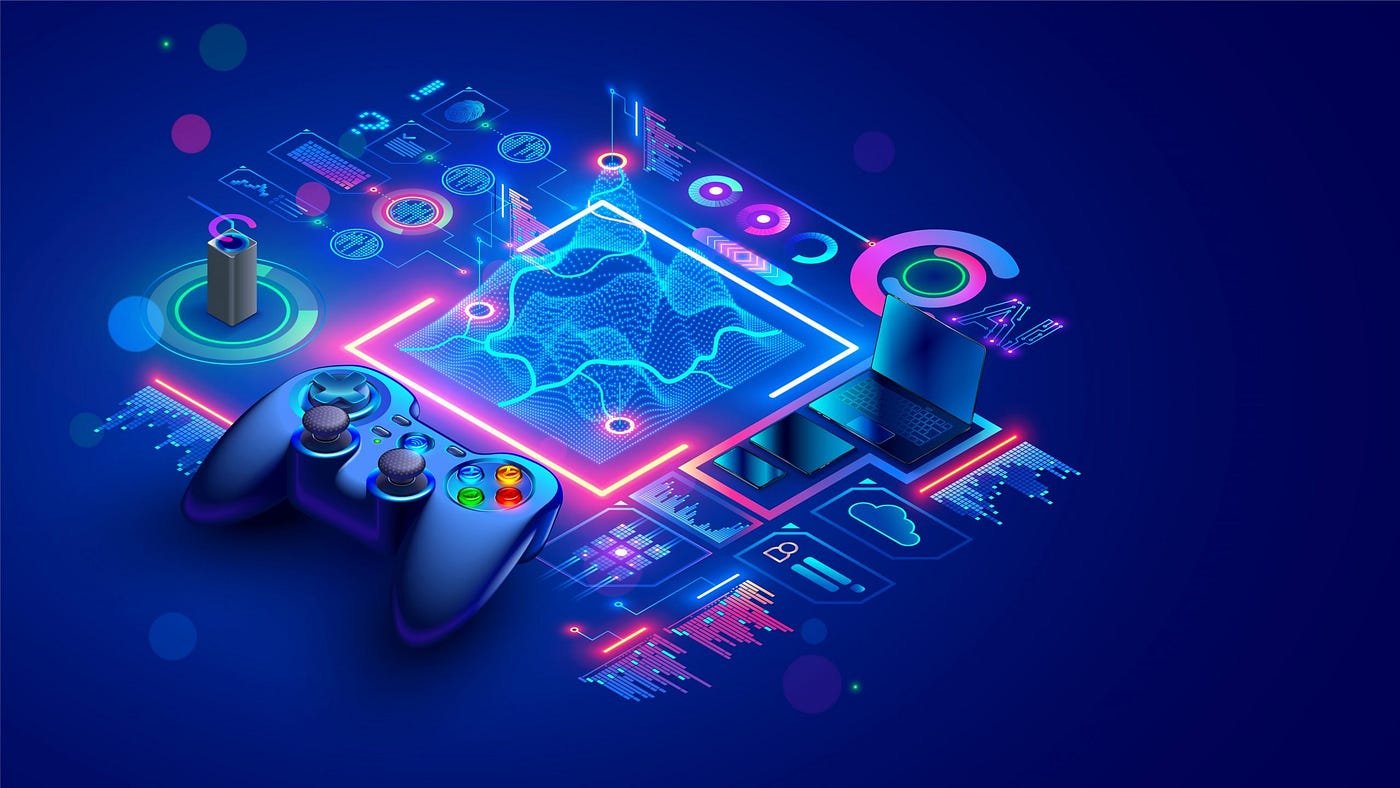Table of Contents
ToggleNo More Just Cannon Fodder
Remember when, in video games, the non-playable characters had the intelligence of a potato? They’d run into walls, get stuck in corners, and make decisions that left you questioning their existence. Well, say goodbye to those days because AI has taken NPCs from zero to heroes.
The advancement of AIs has endowed the NPCs with quite elaborate behaviors, making them far more alive and challenging. They can adapt to what a player is doing and make strategic choices, and they can even emote. This evolution brought an immersion that would leave you feeling part of a living, breathing world, not just running through a scripted series of events.
For instance, in “The Last of Us Part II,” enemies make communication between themselves to tactically attack and dynamically react against the player’s moves. That much intelligence puts players on their toes and deepens the gameplay. NPCs are not precisely parts of the background anymore but have indeed become an integral experience of the game.
Smarter Enemies: Game Over, Cheesy AI
Come on, we must admit it; nothing feels as satisfying as beating that boss who was reading your every move. AI has taken the enemy’s behavior from simple patterns to elaborate attack strategies. That ability to memorize your attack patterns has gone, by which you could breeze through levels.
Modern AI lets enemies learn from your actions, adapt their tactics, and be dynamically challenging. For instance, in “Middle-earth: Shadow of Mordor,” the Nemesis System remembers all your interactions with enemies. Thus, should a player be defeated by an enemy, they grow stronger and taunt the player in future encounters, evolving new abilities to counter the player’s playstyle. Such dynamics would allow a personalized challenge that never stops growing.
Artificial intelligence-driven enemies can now cooperate and set traps, making a game more interactive and unpredictable. That explains – the next time you are caught in an ambush repeatedly because the enemies seem to know how you move – not to fret; that is not a bug, but your artificial intelligence at work.
Adaptive Difficulty: Challenge Adjustment
Modern gaming doesn’t fit all; AI is revolutionizing difficulty settings by making gaming experiences tailor-made for gamers like you—be it pro or casual—so the game adjusts to your skill level, giving a balanced and enjoyable experience.
These games would be like “Left 4 Dead,” where the AI is implemented in real-time for monitoring player performance and adjusting difficulty accordingly. If one breezes through scores, a large number of enemies are thrown towards you at one time, or some make a quick dash towards you for another hit; on the other hand, if one is stricken by difficulty, AI will lower itself so that players have a shot to proceed.
This adaptive difficulty keeps players invested and engaged. The days of quitting from frustration because the game is too difficult or not playing at all because it’s too easy will be over. AI will ensure the challenge is just right so you are constantly entertained and engaged throughout your gaming journey.
Procedural Content Generation: Limitless Possibilities
AI-driven Procedural Content Generation systems genuinely maximize the potential for infinite worlds and endless possibilities. In such a technique, the algorithms are used to create game content in-game, so every time you run the game, everything is different and extraordinary.
Think, for example, of “Minecraft.”: it is a game with AI-based creation tools that features an immense, randomly generated world containing landscapes, structures, and creatures. This means that every game is unique in nature. There are never the same playthroughs twice, which gives way to infinite exploration and creativity. Of course, all AI-based procedural generation ensures the individuality of experience for every player and full surprises.
Another such example is “No Man’s Sky,” where the AI generates an infinite universe—with billions of planets, each with its ecosystem, terrain, and life forms—that gives a sense of scale and wonder impossible to do by manual design solely. AI goes beyond necessary standards.
Personal AI Companions: Your Virtual Sidekick
AI breathed life into the virtual companion, a friend who would be happy for you while going through all your adventures inside a video game. But it doesn’t stop there: the AI-driven sidekick will actively assist, learn, and adapt to your playstyle, making it an invaluable ally.
In The Elder Scrolls V: Skyrim, followers like Lydia are sent to do more than be pack mules. AI is developed to help in battles, giving tactical advice and responding to your actions. With this, your companions almost become part of a character, just adding to the whole factor of immersion with a much more personal touch.
AI companions can also be seen in games like “Mass Effect,” where the squad members respond dynamically to a player’s decision and unfolding story. This will bring more narrative depth, which will stack up and make you feel more meaningful and interactive with your journey.
Voice Recognition: Talking to Your Game
AI also brought voice recognition to gaming, allowing consumers to interact with gaming software in natural language. This brought a new level of immersion and convenience to gameplay, making games more accessible and engaging.
Games like Tom Clancy’s EndWar allow the player to issue commands to control units through voice; here, gameplay becomes sensory and brisk. Instead of fumbling around with menus, you must tell your troops where to go and what to do. This makes you feel that you are in a real-life strategy session, compared to just being in a game.
Voice recognition could be used with AI to also interact with NPCs in order to make conversations real and, to some extent, unpredictable. Picture negotiating with characters or ordering around your team by just talking. This technology really blurs the line between the player and the game, making it such a smooth and immersive experience.
Game Development: The Unsung Hero of AI
Behind the curtain, artificial intelligence plays a preeminent role in game development, both in terms of efficiency and new creativity. The developers use AI not just for the designing of the levels but also for playtesting; in this case, testing is done to propel prospects of what is possible in gaming to greater distances.
Procedural generation is not only an ability to produce in-game content but also an impressive helper for developers. AI algorithms can fully generate the levels, which essentially saves time and resources on the developer’s side. This allows a developer to focus on tuning gameplay and storytelling. AI also contributes to quality assurance by testing game bugs and balancing. It can simulate thousands of playthroughs, automatically identifying potential issues and ensuring smoother launches. This translates into fewer post-launch patches and updates for the player, giving them that polished, fun experience from day one.
The Future of AI in Gaming
Far Beyond the Horizon With more exciting possibilities, this is just expected to get more prominent in the future. Just think of AI-driven characters that could remember your actions from one game to another and another, creating a persistent and evolving relationship. Or AI that can create entirely new game genres by learning from player preferences and behaviors. That implies virtual and augmented reality. AI can boost virtual reality by creating more realistic and interactive environments. In the case of AR, it is possible to combine the virtual environment with real-world elements and create an immersive, exciting outlet for such AR experiences. The more AI matures, the more the line between player and game becomes blurred until it takes you to parts of reality no one ever saw: immersive, bespoke. The future of gaming is bright, and AI is leading the charge. So, AI has revolutionized modern gaming from a plain, simple pastime to a whole new, immersive, dynamic experience. With intelligent NPCs and adaptive difficulty, procedural content generation, and voice recognition, it pushes the boundaries of everything that can be thought of in the gaming industry. So the next time you download and start playing your game, take a moment to appreciate the AI behind curtain No. 2 working to make your adventure much more exciting and memorable. Happy gaming!




